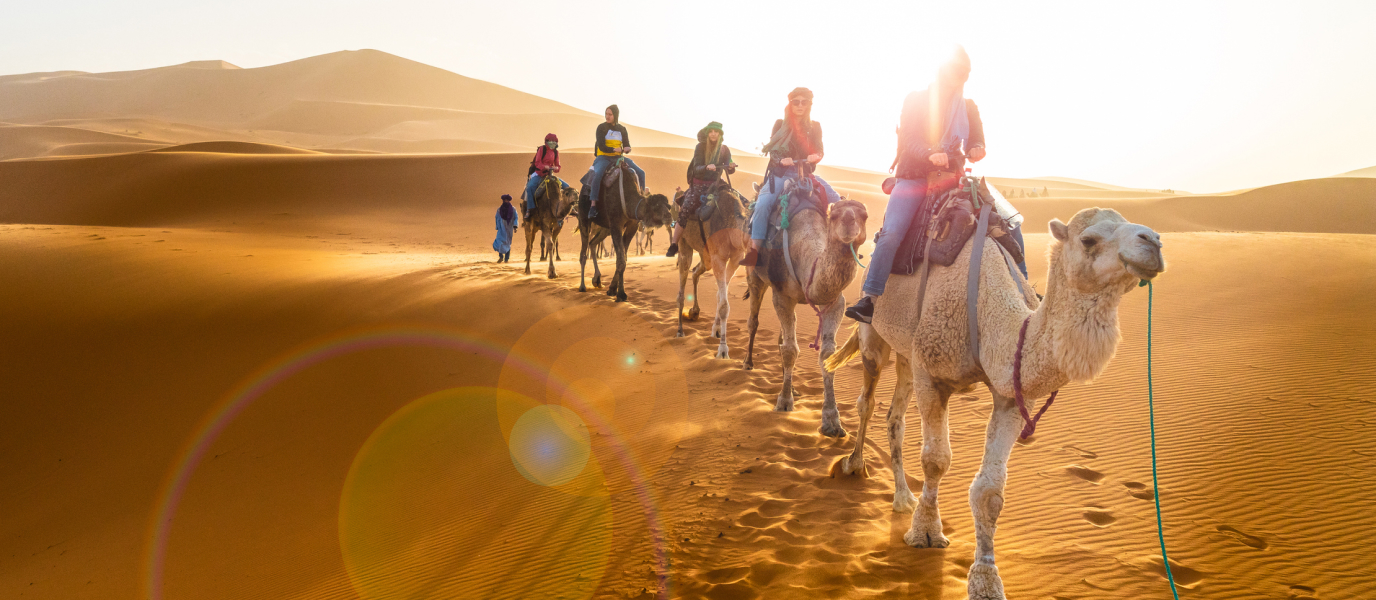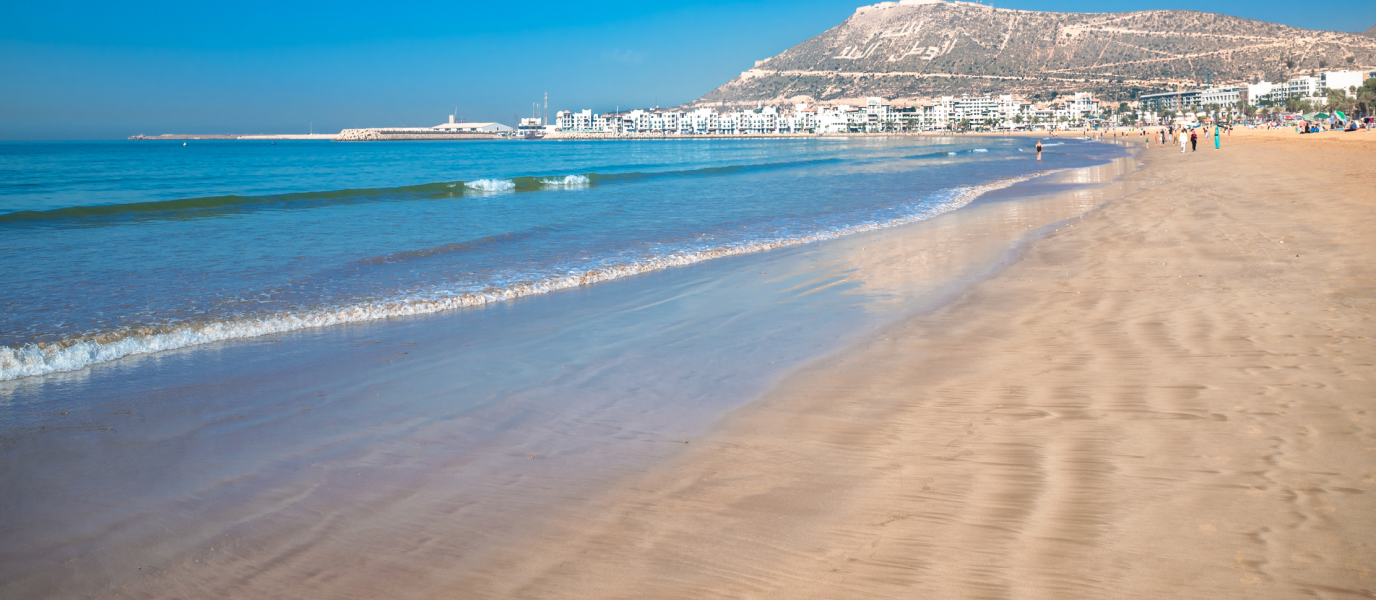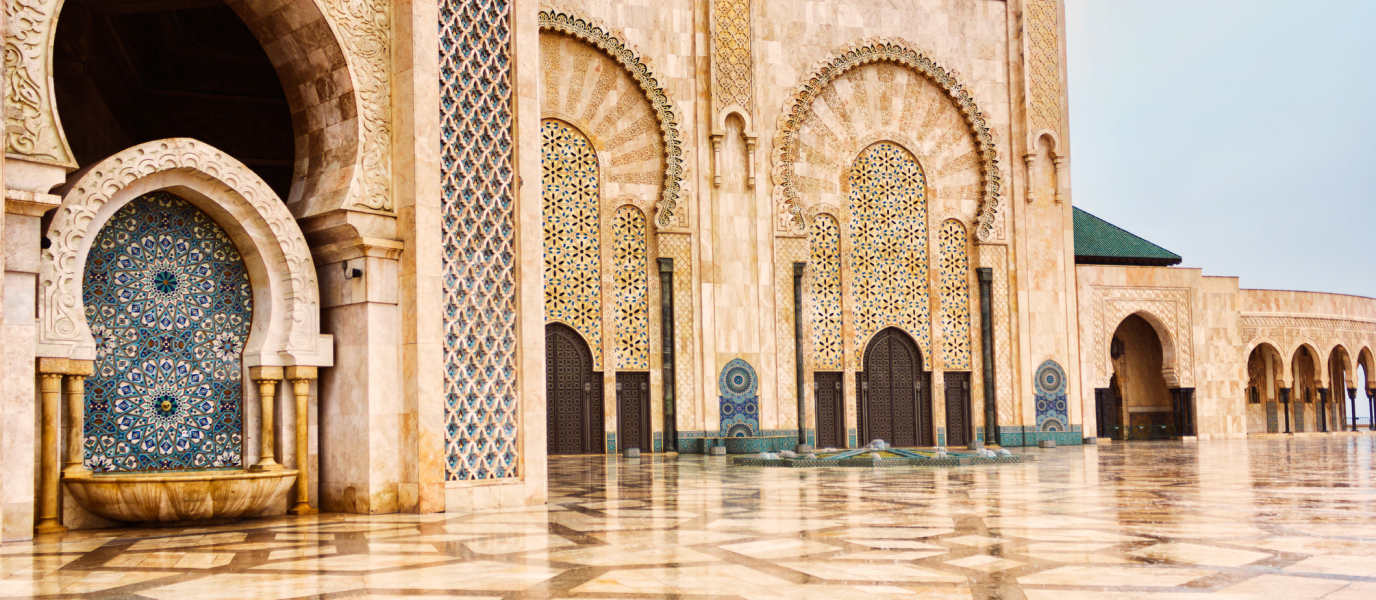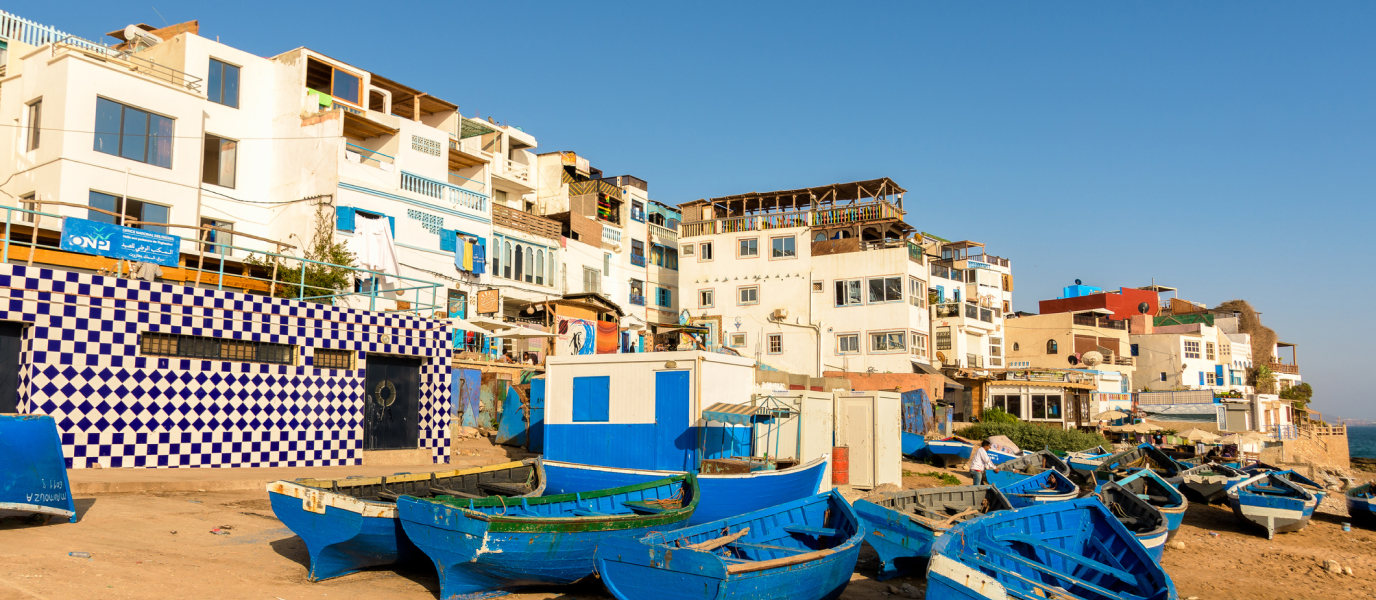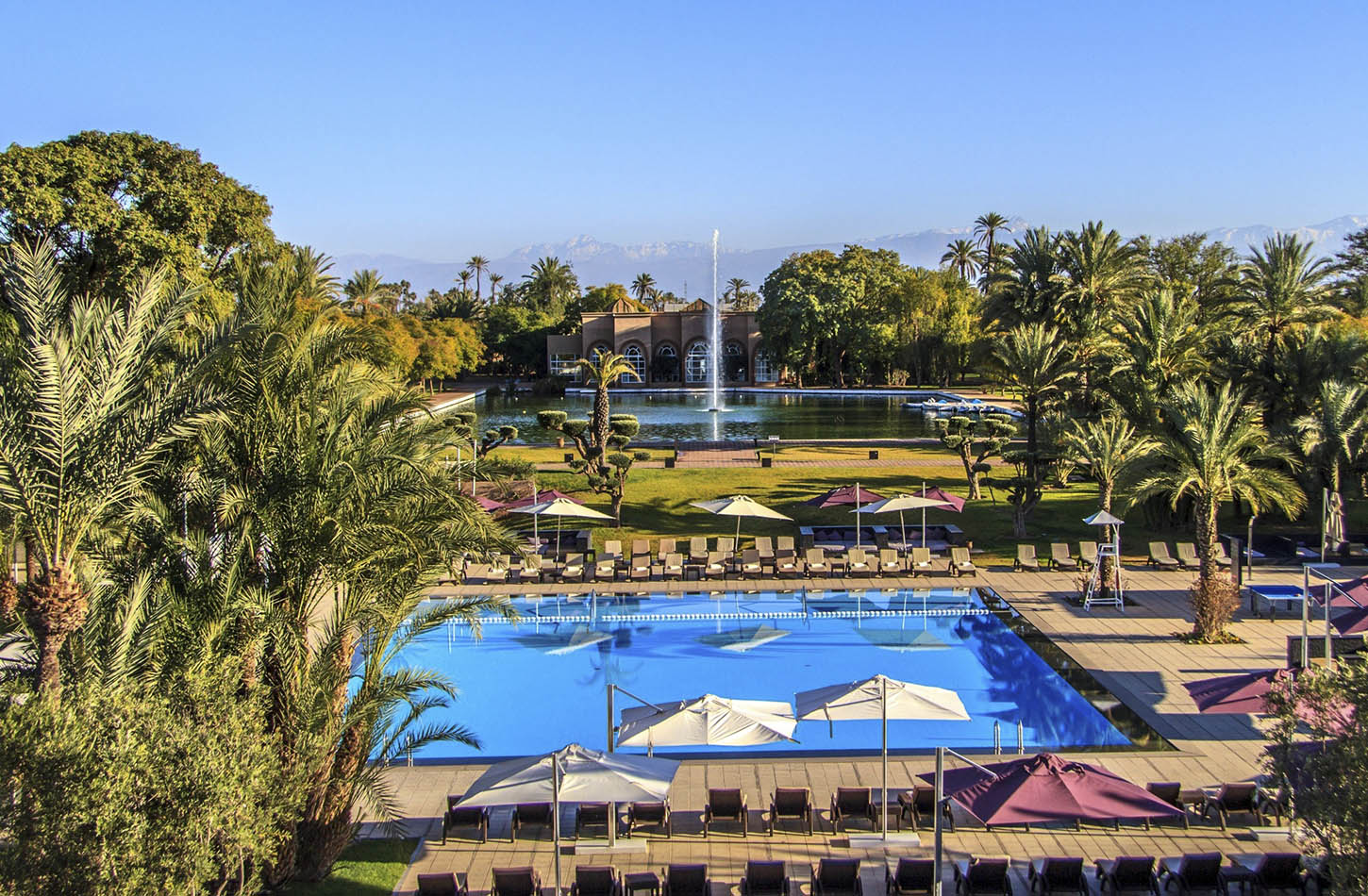Stand before the immense horizon surrounded only by sand, be astonished by the colours at sunrise and sunset, enjoy the blanket of stars at night and find peace in the deepest silence… Would you like to be in your own tale from The Arabian Nights? It’s all possible by visiting the Merzouga Desert, and the Erg Chebbi dunes in particular – “erg” in Arabic refers to a sea of dunes formed by wind-swept sand.
The Merzouga Desert is 20 km from the border with Algeria and is part of the Moroccan region of the Sahara, making it one of the top places to see in Morocco. Come and discover it!
What is there to do in the Merzouga Desert?
If you have a few days to spare after visiting Fez or Marrakesh, don’t miss out on the chance to explore Merzouga first-hand.
Discover the village of Merzouga
From a distance, the adobe houses in the little village of Merzouga blend in with the colour of the sand. Despite being a small village, it’s not short of hotels, riads and restaurants serving typical Moroccan food (internal link) to make your stay as comfortable as possible. The departure point for trips to the Merzouga Desert, we recommend visiting the village during the daytime and setting off at sunset, leaving your restful accommodation behind to spend the night in a tent at one of the camps in the desert. It’s the best way to guarantee an experience that has it all!
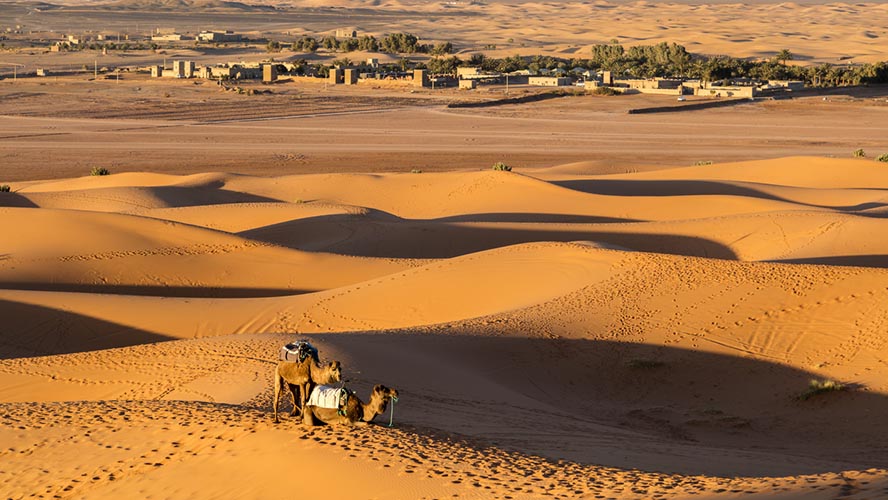
Trips to Erg Chebbi by camel or 4×4
There are several ways to travel across the Merzouga dunes and your choice will depend on the type of adventure you’re after.
Exploring the desert on the back of a dromedary is one of the most popular excursions if you visit Merzouga between February and November. It’s best to set off as the sun goes down so you can sleep out in a tent under the stars – perfect if you’re travelling as a couple and looking for romantic activities in Morocco. Despite being in the middle of nowhere, the camps and tents have all the facilities you could need, so you can enjoy a typical dinner to the sound of Moroccan music and even have a shower to wash away every trace of dust. Don’t forget to take a large handkerchief with you (essential if there’s a sandstorm), and a jacket to keep you warm for two of the most important moments in your trip, sunset and sunrise, when the desert reveals its range of lights, colours and shadows in all their splendour.
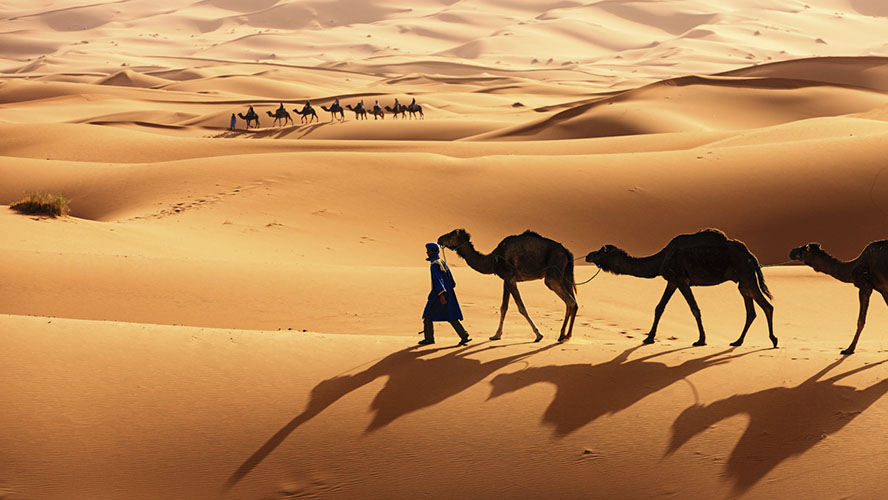
If you’re an adrenaline junky and prefer the pace of a 4×4, you’ll be interested to know that this area of the Moroccan Sahara Desert is the backdrop to one of the country’s most important rallies, the Merzouga Rally, and is also part of the old route of the world-famous Dakar Rally.
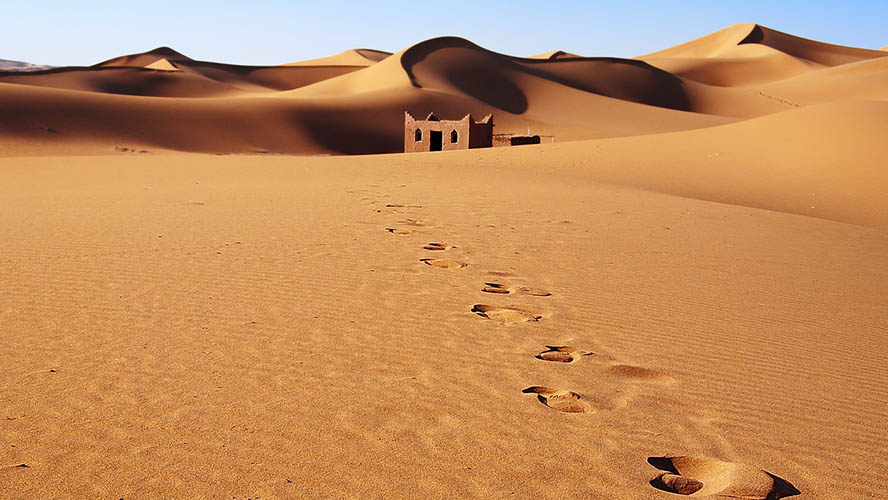
What is there to visit around Merzouga?
If you have time to spare, you could explore the villages and regions around Merzouga:
Khamlia
Khamlia is half an hour by car from Merzouga. This peaceful village of under 400 inhabitants has a firm sense of community. Khamlia is the harmonious home of desert-dwelling Berbers and a minority black population, the descendants of slaves who were taken from Africa and transported to other continents. That’s why the local music, gnawa, was created as a lament, a song to be sung when faced with an uncertain future without freedom. If you visit Khamlia, let yourself be carried away by the magic of these ancestral sounds and dances, which still have great meaning for people here.
Lake Dayet Srij
Lake Dayet Srij is very close to Merzouga (it can be reached on foot, though you won’t find any trees offering shade) and it only appears between June and September, the rainy season. During this period, Lake Dayet Srij can be enjoyed in all its glory. You’ll be surprised by the contrast between the colours of the water and the desert sand, and also the huge number of migratory birds, particularly pink flamingos, that stop here and add to this unique landscape.
City of Orion, Stairway to Heaven, Golden Spiral
Three architectural structures stand in the middle of the desert in the Martha massif and are part of the architectural movement known as Land Art. Surprising, photogenic and evocative, if you’re in the area it’s well worth stopping to discover an example of this style, which harnesses natural elements as part of the process of artistic creation.
M’Fis Kohl mines
These old, French-run baryte and lead mines are still operational today and are a further attraction in the region. They’re called the Kohl mines because this valuable product used in cosmetics is obtained from lead. Located 7 km from Merzouga, the mines can be reached by donkey or foot along a route that features dunes, arid land and desert plants that are typical to the area.
Taouz
Taouz is just 20 minutes by car from Merzouga and this small village sits atop a promontory in the rocky part of the desert (hamada). Its adobe buildings make it stand out on the horizon but the most valuable feature of this area is its great geological wealth; minerals, fossils, archaeological remains, pre-historic paintings and even a pre-Islamic necropolis have been found here.




































































